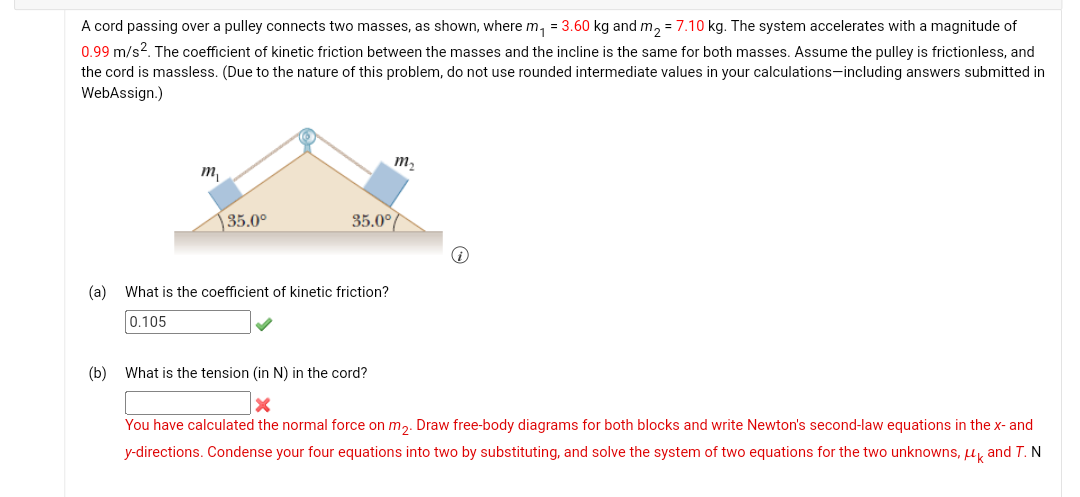A cord passing over a pulley connects two masses, as shown, where m₁ = 3.60 kg and m₂ = 7.10 kg. The system accelerates with a magnitude of 0.99 m/s2. The coefficient of kinetic friction between the masses and the incline is the same for both masses. Assume the pulley is frictionless, and the cord is massless. (Due to the nature of this problem, do not use rounded intermediate values in your calculations-including answers submitted in WebAssign.) m₁ (b) 35.0⁰ 35.0° (a) What is the coefficient of kinetic friction? 0.105 m₂ O What is the tension (in N) in the cord? X You have calculated the normal force on m₂. Draw free-body diagrams for both blocks and write Newton's second-law equations in the x- and y-directions. Condense your four equations into two by substituting, and solve the system of two equations for the two unknowns, μk and T. N
A cord passing over a pulley connects two masses, as shown, where
m1 = 3.60 kg
and
m2 = 7.10 kg.
The system accelerates with a magnitude of 0.99 m/s2. The coefficient of kinetic friction between the masses and the incline is the same for both masses. Assume the pulley is frictionless, and the cord is massless.

Newton's second law of motion:
For application purpose to solve numerical problems:
Newton second law can be stated as:
If an object is applied by an external force, then the acceleration (a in m/s2) on an object due to the effect of an external force (F in N) is directly proportional to the applied force and inversely proportional to the mass (m in kg) of an object in motion.
Mathematically,
Kinetic force of friction acts between an object and surface when object moves relative to surface and this force acts in the direction which opposes the motion.
Mathematically, F= , where, is coefficient of kinetic friction between object in motion and surface & N is the normal force reaction by the surface to that object.
Trending now
This is a popular solution!
Step by step
Solved in 3 steps with 2 images









